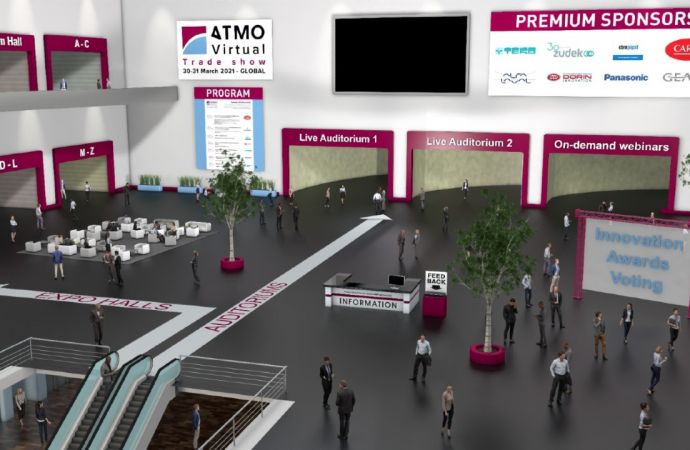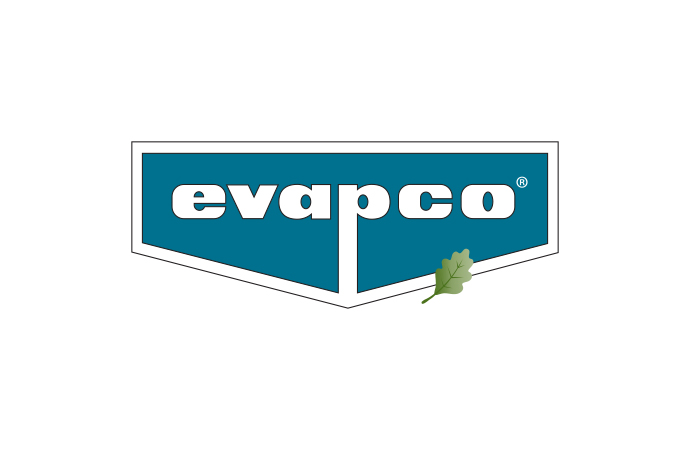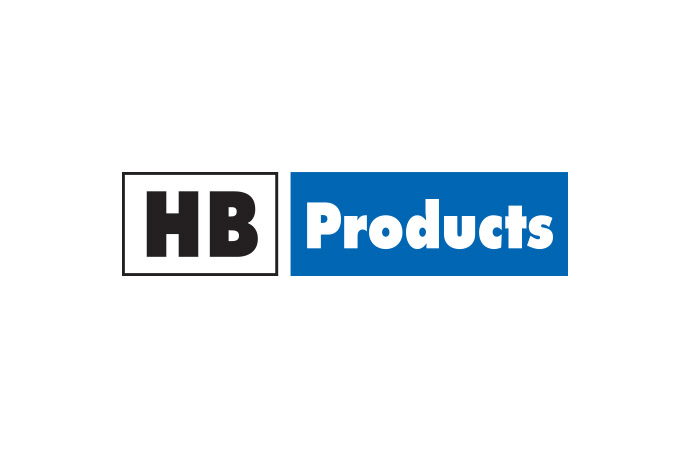Close to 100 delegates have gathered this week in Ohrid, Republic of Macedonia, for the 2011 Ammonia Refrigeration Technology conference. ammonia21.com summarises some of the first day presentations that explored the latest developments with regards to ammonia technology, including dry cooler and condenser innovations, horizontal smooth minichannels, low charge ammonia evaporators with separator vessels and the opportunities for combined heating and cooling. + PHOTOS

The fourth edition of the International Ammonia Refrigeration Conference is taking place from 14-16 April 2011 in Ohrid, under the patronage of the International Institute of Refrigeration (IIR) and the Faculty of Mechanical Engineering of the University of Cyril and Methodius of Skopje, with Professor Risto Ciconkov being in charge of the smooth running of the proceedings.
Didier Coulomb, IIR
Coulomb explained the support that the International Institute of Refrigeration offers for disseminating information in relation to sustainable refrigeration worldwide.
The tools of IIR include:
The IIR will be holding its annual conference in Prague, Czech Republic on 21-26 August 2011 and will be supporting the Gustav Lorenzen Conference in Delft, the Netherlands on 25-27 June 2012.
Eric Smith, technical director for IIAR
Smith gave an overview of the ongoing projects of the International Institute of Ammonia Refrigeration (IIAR) located in the USA.
Three new standards are ready for publication:
Moreover, the IIAR is in close contact with the U.S. Environmental Protection Agency and the US Labor Department's Occupational Safety & Health Administration (OSHA), in an effort to help them understand the ammonia refrigeration business and find it more acceptable.
Finally, the IIAR noted that automated high rise cold storage facilities are becoming a trend. This offers a lot of advantages, however, significant technological concepts need to be addressed like for instance the density of cold air coming from a 100 ft building, the location of the machinery rooms and their accessibility.
Air-cooled condensers in NH3 refrigeration plants as an alternative to evaporative condensers, by Josef Riha, Güntner
Ammonia plants are often designed to run with evaporative condensers only. Güntner reminded that the option of using air-cooled condensers exists and has certain clear benefits. Air-cooled condensers require less maintenance, while no water for cooling needs or chemicals for water treatment are needed to operate them. The air-cooled condenser is the simplest system of all construction types and comprises only few parts. There are no additional operating costs except costs for electricity.
In evaporative condensers, the condensing temperature decreases proportionally to the wet bulb temperature, whereas in air-cooled condensers the condensing temperature decreases proportionally to the ambient temperature. This means that in air-cooled condensers the condensing temperature decreases more intensely compared to evaporative condensers. At ambient temperatures below approximately 20°C, refrigerating plants with air-cooled condensers reach lower condensing temperatures than plants with evaporative condensers, making it possible to reduce the plant energy consumption. Güntner has calculated that the total operating costs per year of an air cooled condenser amount to €46,000 whereas under the same operating conditions an evaporative condenser would cost €106,000.
Opportunities for combined heating and cooling, Andy Pearson Star Refrigeration
The significant opportunities to combine heating and cooling needs have not been exploited to their full potential yet. In his paper, Pearson explains some of the metrics used to assess systems that combine heating and cooling, the shortcomings of the existing methods, and proposes adoption of a common approach to system assessment. The paper also explores some of the opportunities for combined heating and cooling and addresses some of the barriers to adoption of this technology including capital cost, convenience, lack of co-incidence of equivalent cooling and heating demand for an individual user, as well as the local price ratio between gas and electricity. The author concludes that in countries with low-carbon electrical generation such as Norway, Switzerland and France, combined heating and cooling offers a significant reduction in carbon emissions compared with burning fossil fuel to meet the heating demand. In other countries, such as the UK, Germany and the USA, where the generation mix is less favourable there is still a sizeable advantage.
The concept of heat pumps was first suggested more than 150 years, while heat recovery from industrial systems and chillers is being occasionally employed. However, the market for heating is far larger than the market for refrigeration and there are many users of heat who have no need for the cooling by-product that would result from their deployment of a heat pump. The trick therefore is to find uses for that cooling in order to avoid the need for someone else to have to produce it themselves.
Designing ammonia systems for maintenance and safety, by Gary Webster, Krafts Foods Global
Webster explained that properly designed, maintained and operated ammonia systems can be very safe.
At the initial design stage, it is paramount to get advice from an ammonia design/build contractor. In addition, during the design stage, it is important to have facility engineers, utility supervisors and refrigeration operators involved in the design. Reviews of the design should be done with all parties involved, at 30% -60%- 90% from completion.
Ammonia safety is all about following local, city, and country rules, regulations and codes. Typically, exits from an engine room need to be provided in case of ammonia leakage and showers need to be strategically located inside and outside the engine room. Ventilation fans and wall louvers can be provided to allow fresh air into the engine room to avoid high ammonia concentration. Ammonia sensors strategically located in engine rooms are typically part of good design. In addition, consider installing break glass stations for immediate electrical shunt trip of all engine room power.
For good maintenance purposes, it is extremely important to layout equipment with ample working distances and clearances. A minimum of one meter in front of all electrical panels and 1.2 - 1.5 meters between compressors, chilled water pumps, etc should be considered as well as double doors or an overhead door into the engine room for equipment maintenance removal and future installations.
Finally, a good preventative maintenance programme for ammonia refrigeration systems and equipment provides safety, reliability and longevity of the system.
Dry and spray technology: liquid coolers, condensers, gas coolers with low energy and water consumption, by Stefano Filippini, LU-VE
The new range of large capacity dry coolers and condensers, based on the DRY and SPRAY operating principle, are the result of intense R&D carried out at the laboratories of the LU-VE Group.
The DRY and SPRAY products represent the most advanced point in the development of dissipaters capable of exchanging great quantities of heat at low temperature, near that of the dry bulb air temperature. The objective underlying the research was to create a product that has the lowest possible impact on the environment and therefore able to allow heat exchange temperatures near the ambient temperature (guaranteeing high COP of the installation) combined with low ventilation consumption.
The products in the DRY and SPRAY series work as traditional dry coolers (or condensers) for as long as the ambient air temperature is low enough to maintain cooling power and the temperature of the cooled liquid (or the condensation pressure) at the projected conditions (DRY operation). However, once the ambient air temperature becomes too high to maintain cooling capacity and refrigerant temperature at the projected conditions, the system automatically starts to spray the required amount of water onto the fins (WET operation).
Two-phase flow heat transfer during NH3 vaporization in horizontal smooth minichannels by J. S. Jeong Chonnam, National University in South Korea
An experimental study of convective boiling heat transfer was conducted with NH3 in horizontal smooth minichannels.
Compared with conventional channels, evaporation in small channels may provide higher heat transfer coefficients due to their higher contact area per unit volume of fluid.
The experimental results showed insignificant effects of mass flux and vapor quality, as well as a significant effect of heat flux on heat transfer coefficients at low quality regions. At the moderate-high quality region, the heat transfer coefficient for the higher mass flux rises and then drops at an area of relatively lower quality. The experimental results also show the effect of inner tube diameter and saturation temperature on heat transfer coefficients. The geometric effect of the small channels also contributed to the higher boiling nucleation.
Therefore, the geometric effect of small tubes must be considered to develop a new heat transfer coefficient correlation.
Compact, energy efficient, low charge ammonia evaporator with separator vessel, by Rolf Christensen, Alfa Laval Lund AB
Alfa Laval presented ways to obtain low ammonia charges in a plant by minimiding the charge in the evaporator and separator vessel.
Some of the most common problems and solutions for evaporators installed in ammonia refrigeration systems have been considered in the development of a dedicated separator vessel design for Alfa Laval’s semi-welded plate heat exchangers, called U-turn. The main advantages with the U-turn are the compactness and the impact on energy efficiency. However, it is also shown that the design also makes it possible to reduce the charge in the evaporator and separator. Alfa Laval has thus been able to develop a very compact flooded system with increased efficiency by enabling higher evaporation temperatures and at the same time reduce the refrigerant charge to a minimum.
Didier Coulomb, IIR
Coulomb explained the support that the International Institute of Refrigeration offers for disseminating information in relation to sustainable refrigeration worldwide.
The tools of IIR include:
- The FRIDOC database, a scientific and technological refrigeration technology literature record encompassing 90,000 entries from 5,000 authors
- The International Journal of Refrigeration
- Books & guides for ammonia technology that are edited by the IIR, with the support of authors sitting in its Commissions.
The IIR will be holding its annual conference in Prague, Czech Republic on 21-26 August 2011 and will be supporting the Gustav Lorenzen Conference in Delft, the Netherlands on 25-27 June 2012.
Eric Smith, technical director for IIAR
Smith gave an overview of the ongoing projects of the International Institute of Ammonia Refrigeration (IIAR) located in the USA.
Three new standards are ready for publication:
- Maintenance of ammonia refrigeration systems
- Start up & commissioning of ammonia refrigeration systems
- Definitions and terminology in relation to ammonia
Moreover, the IIAR is in close contact with the U.S. Environmental Protection Agency and the US Labor Department's Occupational Safety & Health Administration (OSHA), in an effort to help them understand the ammonia refrigeration business and find it more acceptable.
Finally, the IIAR noted that automated high rise cold storage facilities are becoming a trend. This offers a lot of advantages, however, significant technological concepts need to be addressed like for instance the density of cold air coming from a 100 ft building, the location of the machinery rooms and their accessibility.
Air-cooled condensers in NH3 refrigeration plants as an alternative to evaporative condensers, by Josef Riha, Güntner
Ammonia plants are often designed to run with evaporative condensers only. Güntner reminded that the option of using air-cooled condensers exists and has certain clear benefits. Air-cooled condensers require less maintenance, while no water for cooling needs or chemicals for water treatment are needed to operate them. The air-cooled condenser is the simplest system of all construction types and comprises only few parts. There are no additional operating costs except costs for electricity.
In evaporative condensers, the condensing temperature decreases proportionally to the wet bulb temperature, whereas in air-cooled condensers the condensing temperature decreases proportionally to the ambient temperature. This means that in air-cooled condensers the condensing temperature decreases more intensely compared to evaporative condensers. At ambient temperatures below approximately 20°C, refrigerating plants with air-cooled condensers reach lower condensing temperatures than plants with evaporative condensers, making it possible to reduce the plant energy consumption. Güntner has calculated that the total operating costs per year of an air cooled condenser amount to €46,000 whereas under the same operating conditions an evaporative condenser would cost €106,000.
Opportunities for combined heating and cooling, Andy Pearson Star Refrigeration
The significant opportunities to combine heating and cooling needs have not been exploited to their full potential yet. In his paper, Pearson explains some of the metrics used to assess systems that combine heating and cooling, the shortcomings of the existing methods, and proposes adoption of a common approach to system assessment. The paper also explores some of the opportunities for combined heating and cooling and addresses some of the barriers to adoption of this technology including capital cost, convenience, lack of co-incidence of equivalent cooling and heating demand for an individual user, as well as the local price ratio between gas and electricity. The author concludes that in countries with low-carbon electrical generation such as Norway, Switzerland and France, combined heating and cooling offers a significant reduction in carbon emissions compared with burning fossil fuel to meet the heating demand. In other countries, such as the UK, Germany and the USA, where the generation mix is less favourable there is still a sizeable advantage.
The concept of heat pumps was first suggested more than 150 years, while heat recovery from industrial systems and chillers is being occasionally employed. However, the market for heating is far larger than the market for refrigeration and there are many users of heat who have no need for the cooling by-product that would result from their deployment of a heat pump. The trick therefore is to find uses for that cooling in order to avoid the need for someone else to have to produce it themselves.
Designing ammonia systems for maintenance and safety, by Gary Webster, Krafts Foods Global
Webster explained that properly designed, maintained and operated ammonia systems can be very safe.
At the initial design stage, it is paramount to get advice from an ammonia design/build contractor. In addition, during the design stage, it is important to have facility engineers, utility supervisors and refrigeration operators involved in the design. Reviews of the design should be done with all parties involved, at 30% -60%- 90% from completion.
Ammonia safety is all about following local, city, and country rules, regulations and codes. Typically, exits from an engine room need to be provided in case of ammonia leakage and showers need to be strategically located inside and outside the engine room. Ventilation fans and wall louvers can be provided to allow fresh air into the engine room to avoid high ammonia concentration. Ammonia sensors strategically located in engine rooms are typically part of good design. In addition, consider installing break glass stations for immediate electrical shunt trip of all engine room power.
For good maintenance purposes, it is extremely important to layout equipment with ample working distances and clearances. A minimum of one meter in front of all electrical panels and 1.2 - 1.5 meters between compressors, chilled water pumps, etc should be considered as well as double doors or an overhead door into the engine room for equipment maintenance removal and future installations.
Finally, a good preventative maintenance programme for ammonia refrigeration systems and equipment provides safety, reliability and longevity of the system.
Dry and spray technology: liquid coolers, condensers, gas coolers with low energy and water consumption, by Stefano Filippini, LU-VE
The new range of large capacity dry coolers and condensers, based on the DRY and SPRAY operating principle, are the result of intense R&D carried out at the laboratories of the LU-VE Group.
The DRY and SPRAY products represent the most advanced point in the development of dissipaters capable of exchanging great quantities of heat at low temperature, near that of the dry bulb air temperature. The objective underlying the research was to create a product that has the lowest possible impact on the environment and therefore able to allow heat exchange temperatures near the ambient temperature (guaranteeing high COP of the installation) combined with low ventilation consumption.
The products in the DRY and SPRAY series work as traditional dry coolers (or condensers) for as long as the ambient air temperature is low enough to maintain cooling power and the temperature of the cooled liquid (or the condensation pressure) at the projected conditions (DRY operation). However, once the ambient air temperature becomes too high to maintain cooling capacity and refrigerant temperature at the projected conditions, the system automatically starts to spray the required amount of water onto the fins (WET operation).
Two-phase flow heat transfer during NH3 vaporization in horizontal smooth minichannels by J. S. Jeong Chonnam, National University in South Korea
An experimental study of convective boiling heat transfer was conducted with NH3 in horizontal smooth minichannels.
Compared with conventional channels, evaporation in small channels may provide higher heat transfer coefficients due to their higher contact area per unit volume of fluid.
The experimental results showed insignificant effects of mass flux and vapor quality, as well as a significant effect of heat flux on heat transfer coefficients at low quality regions. At the moderate-high quality region, the heat transfer coefficient for the higher mass flux rises and then drops at an area of relatively lower quality. The experimental results also show the effect of inner tube diameter and saturation temperature on heat transfer coefficients. The geometric effect of the small channels also contributed to the higher boiling nucleation.
Therefore, the geometric effect of small tubes must be considered to develop a new heat transfer coefficient correlation.
Compact, energy efficient, low charge ammonia evaporator with separator vessel, by Rolf Christensen, Alfa Laval Lund AB
Alfa Laval presented ways to obtain low ammonia charges in a plant by minimiding the charge in the evaporator and separator vessel.
Some of the most common problems and solutions for evaporators installed in ammonia refrigeration systems have been considered in the development of a dedicated separator vessel design for Alfa Laval’s semi-welded plate heat exchangers, called U-turn. The main advantages with the U-turn are the compactness and the impact on energy efficiency. However, it is also shown that the design also makes it possible to reduce the charge in the evaporator and separator. Alfa Laval has thus been able to develop a very compact flooded system with increased efficiency by enabling higher evaporation temperatures and at the same time reduce the refrigerant charge to a minimum.
MORE INFORMATION
Related stories


















_1522327086.png)





